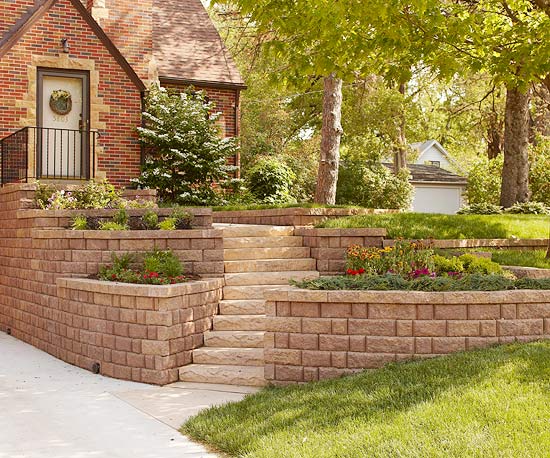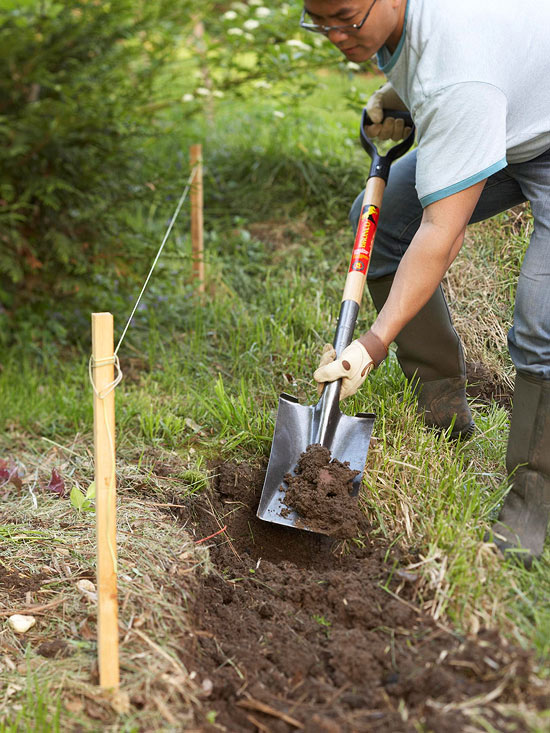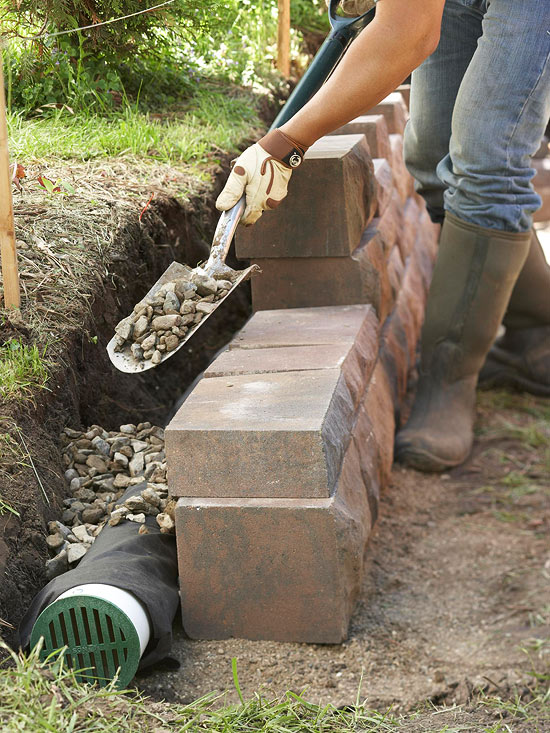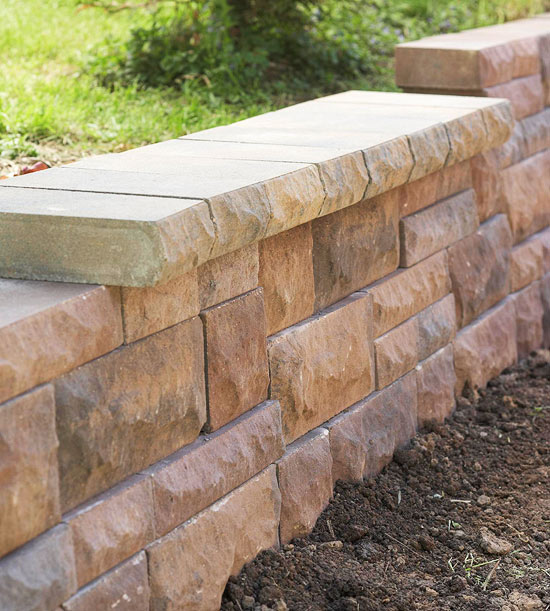






Landscape walls are a gardener's way to fight gravity: They're typically used to hold back part of a yard that would otherwise fall down. They can also be used to carefully step up a difficult slope, cut down on erosion, and provide distinct outdoor rooms at different elevations.
But in order to work -- and stay solid -- a landscape wall must be correctly constructed and maintained. That includes creating a solid base, adding enough tilt to the back (called battering), and including drains to keep water from damming up behind it. With the earth constantly at work pushing on the landscape walls, they need regular maintenance and occasional repairs. Here's how to build yours and keep it in its best shape.
continue reading below
You'll have to create a path for each landscape wall using wood stakes and a mason's line and cut away excess soil. The first course, or line, of the landscape wall block will nest in a trench that you'll have to dig; it should be at least 2 inches below the soil in front. Line the back face of the excavation and trench with landscape fabric, then add a 1-inch-deep layer of sand for bedding.
To ensure drainage, install perforated drainpipe behind the first course of the landscape wall, using soil to create grading and a slight incline. Make sure to fit the open ends of the pipe run with grate inserts to prevent clogging. Pull the landscape fabric down to cover the drainage pipe, then add a 3-inch layer of crushed rock.
Set the first base block into the sand and tamp with a mallet; the blocks should tile back slightly, creating a slight incline and forcing the wall to lean into the hill. Place the remaining base blocks into the sand and align them along the top and back surfaces, checking with a straightedge and tamping each block with a mallet. Complete the block pattern until you have a flat upper course; adhere cap units with construction adhesive, cut excess landscape fabric, and backfill the hillside behind the wall. At the front of the wall, add fill dirt to cover at least half of the base course blocks.
Plants will help integrate the retaining wall into the landscape, but select species that won't cause problems with migrating roots. Plant flowers and groundcovers closest to the wall, and small shrubs at least 3 feet away. Large shrubs and small trees should be 6 feet or more from the wall, and large trees at least 15 feet.

A leading cause of failure among landscape retaining walls is improper drainage, which allows water and wet soil to build up behind the wall. That's why installing proper drainage is so important.
Some walls are also built with weep holes along the base that allow water to run through the wall. Clean these openings with a length of wire or screwdriver to ensure that they stay open. If a drainpipe exists behind your wall, check during the rainy months that the pipe is not plugged.

Landscape wall problems generally fall into two categories: tilted walls or loose materials.
If a landscape wall is leaning downhill instead of being tilted back uphill, it is losing the battle with gravity and the weight of the earth behind it. The same holds true if a section of the wall has become bowed out of line. Landscape retaining walls cannot be simply pushed back into proper alignment; they must be torn down and rebuilt.
If a brick in a mortared wall comes loose, remove it and chip away the old mortar around it. Apply a layer of ready-mix mortar, available at home supply stores, to the bottom and ends of the brick, then slide the brick back into the opening. Add mortar to the top of the brick by pushing mortar from your trowel into the space with a jointing tool or the back of an old spoon. Scrape the excess mortar from the brick with a trowel, then wipe the brick clean with a wet rag. Repair loose rocks in a mortared stone landscape wall in the same manner.
Another common problem of stone landscape walls is a loose cap rock. Repair it by chipping off the old mortar, then setting the cap rock in a new bed of mortar. Fill gaps around the cap rock with mortar.
Copyright © www.100flowers.win Botanic Garden All Rights Reserved